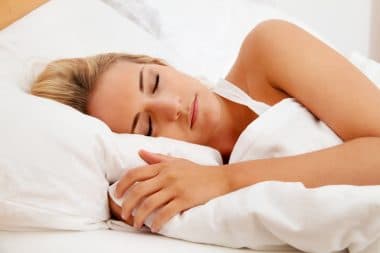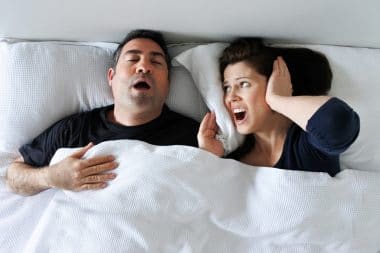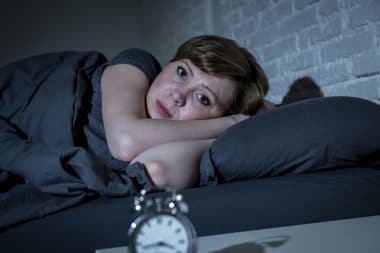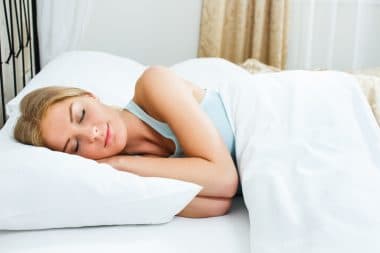Sleeping disorders, including sleep apnea, affect a lot more people than you would imagine. Most people have experienced or struggled with a sleeping disorder at one point or the other.
Sleep Apnea is a common sleeping disorder that affects up to 22 million Americans in the United States. Worse, about 80 percent of these cases remain undiagnosed until it becomes severe. Once severe, it can lead to or increase the risks of developing harsh health conditions.
Hence, it’s necessary to treat and diagnose sleep apnea and other sleeping disorders as soon as possible to prevent this from happening. Continue reading below to know how to handle sleep apnea and other sleeping disorders.
What is Sleep Apnea?
Sleep Apnea is a type of sleep disorder condition that affects one’s breathing during sleep. The apnea here means a pause in breathing that lasts for at least 10 seconds, which means a person suffering from sleep apnea experiences a brief and repeated pause in their breathing while they’re sleeping.
There are different types of sleep apnea, such as obstructive sleep apnea, central sleep apnea, and complex sleep apnea. Of the three, obstructive sleep apnea is the most common.
Obstructive sleep apnea happens when the tissue at the back throat blocks the airway for breathing during the sleep. Central sleep apnea occurs when the central nervous system refuses or delays in the sending signals needed to breathe. Complex sleep apnea, on the other hand, is the combination of both central sleep apnea and obstructive sleep apnea.
How to Know If You Have Sleep Apnea
Although snoring is a strong indicator of sleep apnea, however, it doesn’t automatically mean you have sleep apnea if you snore. How, then, can you tell if you have sleep apnea, especially if you snore?
Some of the common symptoms of sleep apnea are sleep deprivation, frequent breathing pauses while sleeping, chronic snoring, restless sleep, gasping, and waking up at night with short breath.
Other signs such as sore throat, especially when you wake up, fitful sleep, poor concentration during the day, sexual dysfunction, moodiness, memory problem, and depression are all symptoms of sleep apnea.
If you’re exhibiting several of these signs, it’s advisable to go to a doctor for proper diagnosis. If you’re suspecting that you have symptoms, one of the best ways of identifying sleep apnea is to record yourself while sleeping or ask your partner to watch your sleeping pattern.
A doctor’s diagnosis can tell you the next way forward and suggests the best treatment option for your condition.
How to Handle Sleep Disorders
Sleep disorders are a prevalent condition among adults and even children. The most popular types of sleep disorders include insomnia, narcolepsy, restless legs syndrome, sleep apnea, and REM sleep behavior disorder.
Although almost everyone has once experienced difficulty sleeping due to stress and other factors, however, you should see your doctor when this develops into a routine.
Treatment for sleep disorders may vary depending on the severity of your condition, the underlying cause, and the type of sleep disorder. Nonetheless, a combination of life changes and medications can help.
Medical treatment may involve the use of breathing devices, dental guard, sleeping pills, allergy medication, melatonin supplement, treatment for underlying causes, and surgery.
Lifestyle changes that can help and improve the quality sleep include:
- Eating a balanced diet
- Reducing sugar intake
- Creating and following a sleeping routine
- Limiting alcohol and caffeine intake
- Quit smoking
- Regular exercising
- Losing weight
Treatment Options for Sleep Apnea
Despite posing severe health and physical challenges, sleep apnea is thankfully a treatable condition. There are different treatment options for sleep apnea, and you should make an informed decision based on a doctor’s advice.
-
Using a Continuous Positive Airway Pressure Device (CPAP)
According to wellawaresystems, one of the most effective ways of treating obstructive sleep apnea, which is the most common type of sleep apnea, is to use a CPAP. A CPAP is a mask that’s worn over the nose/mouth to gently blow air into the airways and prevent the airways from blocking during sleep.
You should use CPAP as recommended by a doctor. However, if you experience side effects or have difficulties using your CPAP, it’s advisable to talk to your doctor for help or look for alternative treatments.
Other alternatives to CPAC therapy include wearing an oral appliance, using breathing devices, implants, and surgery.
-
Breathing Devices
If you’re unable to adapt to the use of CPAP therapy, your doctor may recommend that you wear other breathing devices. There are different breathing devices you can explore, some of the most popular ones include:
- Expiratory airway pressure (EPAP): is single-use breathing that’s worn on the nostrils to keep the airways open. EPAPS are smaller than CPAP, making it less visible and intrusive.
- Adaptive servo-ventilation (ASV): this breathing device is ideal for treating central and obstructive sleep apnea. The equipment notes down your breathing pattern and uses airflow pressure to prevent breathing pauses when you’re sleeping.
- Bilevel positive airway pressure (BPAP): is a good alternative for those who are finding it challenging to use a CPAP. It’s also ideal for people with central sleep apnea because it automatically helps adjust airflow pressure, helping you achieve and maintain a regular sleep pattern.
-
Oral/Dental Appliances
One of the advantages of oral appliances is that they can be customized. In addition to that, they’re also portable, more comfortable, and make lesser noise. Oral appliances also adjust the tongue and lower jaw to allow for regular breathing.
The most common types include the tongue retaining device and the mandibular advancement device.
-
Implants
Implants are one of the new treatment options for sleep apnea. It involves the insertion of an implant that stimulates the muscles that control the airways. That way, the airways are always opened, allowing you to sleep without interruptions.
-
Surgery
In case you have tried all the options above, and none seems to work for you, surgery might be the next option to explore. Sleep apnea surgery increases the size of your airways to allow for more air and a regular breathing pattern.
The surgery may require removal of the tissue at the back of the throat blocking the airways, reconstruction of the jaw, or removal of tonsils.
-
Lifestyle Changes
A doctor may also suggest specific lifestyle changes that can improve and treat sleeping apnea and other sleep disorders.
Some of these lifestyle changes include:
- Undergoing a weight loss/management program.
- Positional therapy, which involves wearing a device that prevents you from sleeping on your back, a position that encourages sleep apnea.
- Quitting smoking, avoiding alcohol, and sleeping pills.
Conclusion/Takeaways
Sleep apnea and other sleeping disorders can pose severe threats to your physical and mental health. Knowing what to do and how to handle the situation can significantly help you resolve the condition and regain a healthy sleeping pattern.
The first thing to do is knowing the signs and symptoms to look out for, then try and identify if you have these symptoms as well. A visit to a doctor is necessary to accurately diagnose what kind of sleep disorder you’re dealing with and the best treatment option to use.
The most common treatment options include using breathing devices, dental or oral appliances, positional therapy, surgery, to mention a few.








Reply